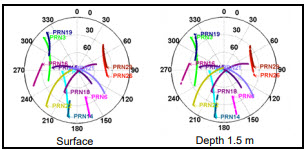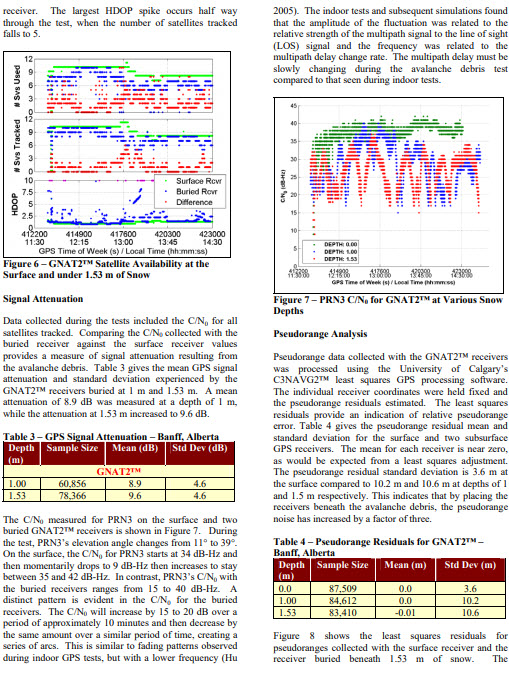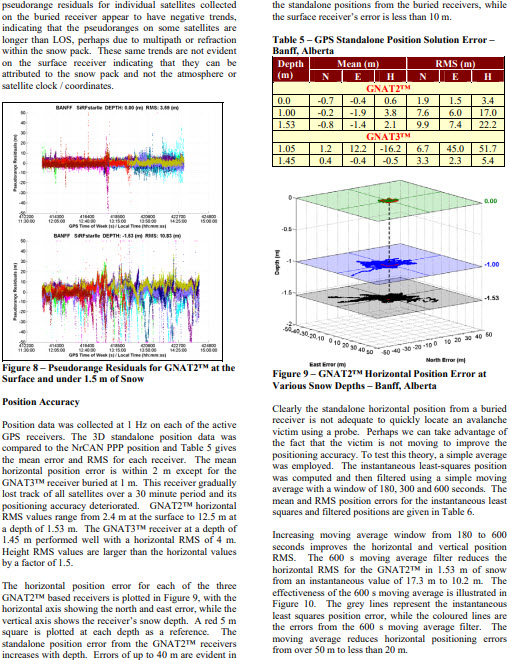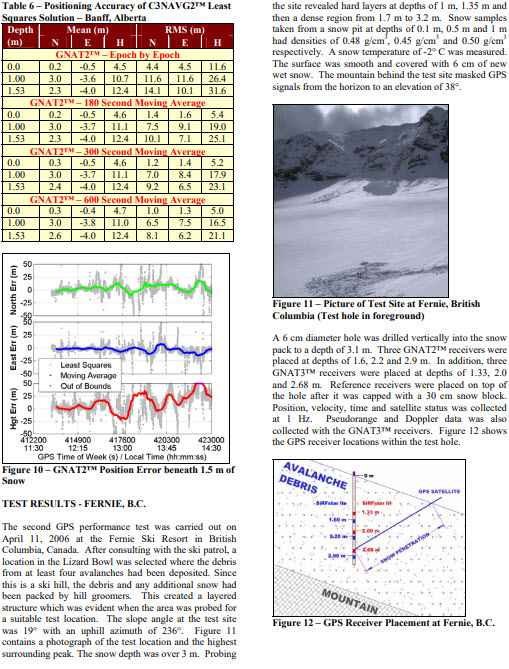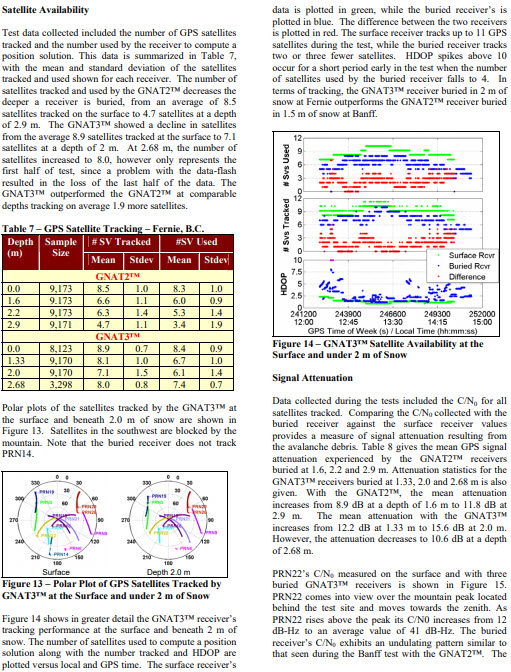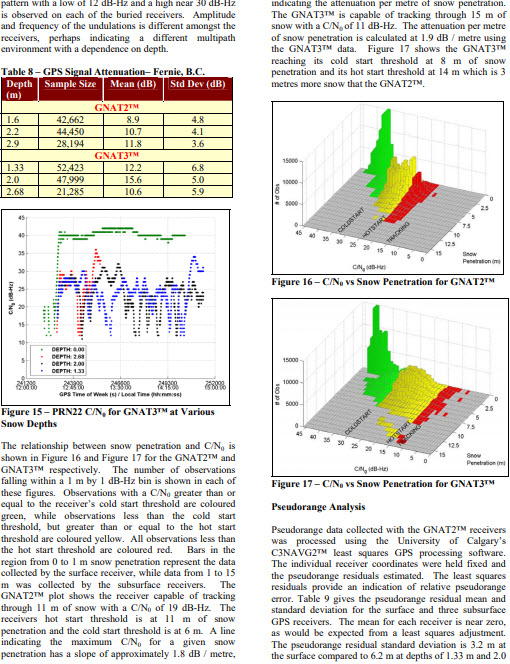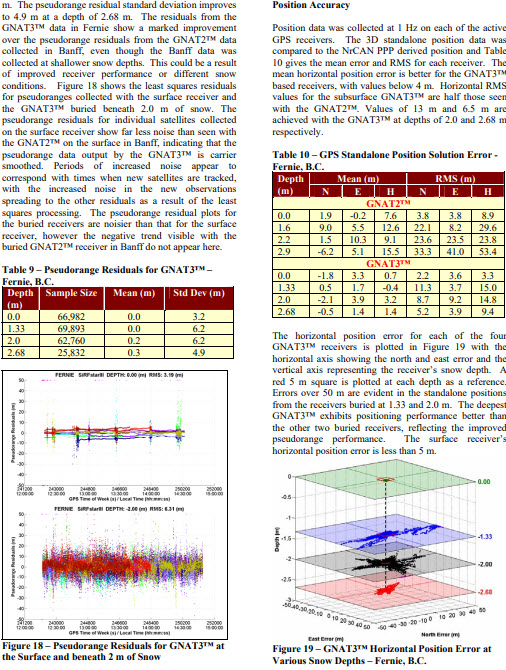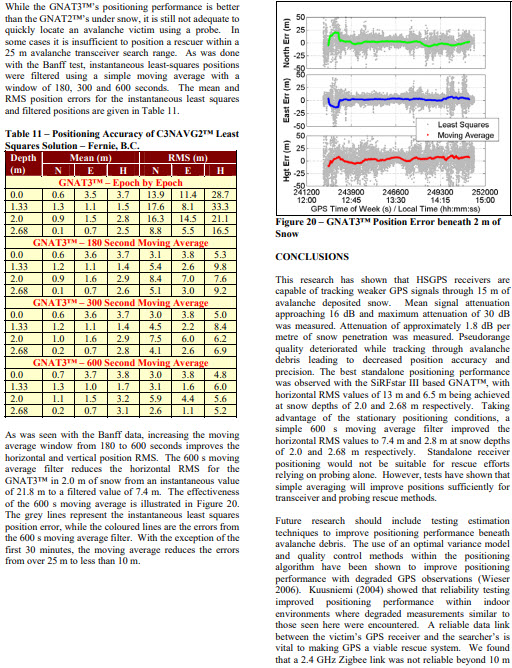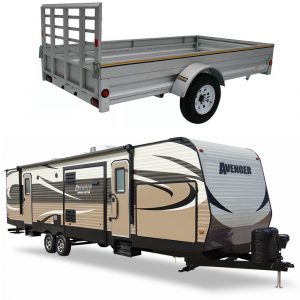Avalanche Protection & GPS. An article published by John B. Schleppe and Gérard Lachapelle . Republished from https://schulich.ucalgary.ca/
Avalance Protection abstract
The following execution of a few High Sensitivity Global Positioning System (HSGPS) recipients under torrential slide stored snow was explored.
To understand this research paper, you must have an understanding of the gps technology and how it works.
Two field preliminaries were held during April 2006 in the Canadian Rocky Mountains to examine the elements influencing GPS signals and situating execution, to decide if gps is reasonable for torrential slide assurance. The PLAN Group at the University of Calgary has built up the scaled down Global Navigation Asset Tracker (GNAT™) which incorporates the SiRFstar IIe/LP or SiRFstar III GPS beneficiaries with a microcontroller, installed streak stockpiling and a 2.4 GHz Zigbee modem. The test frameworks were set totally down a 6 cm borehole for 2.5 hours with position, speed, time, status and crude perception information gathered at 1 Hz. Post-strategic included deciding GPS signal constriction, pseudorange estimation blunder and accessibility alongside single point position exactness as they identify with the recipients profundity in the snow pack. GPS Signal lessening of around 1.8 dB per meter of snow infiltration was estimated. Strategies for improving the situation underneath the torrential slide trash were explored, bringing about even position RMS estimations of 7.4 m and 2.8 m at snow profundities of 2.0 and 2.68 m separately.
Introduction
With the ongoing approach of minimal effort High Sensitivity Global Positioning System (HSGPS) collectors for avalanche protection it might be conceivable to find torrential slide exploited people at snow profundities of 2 meters and past. Various makers are creating HSGPS beneficiaries for the wireless market in light of the FCC improved 911 (E911) stage II command, which expects administrators to give the area of a telephone making a 911 call. The prerequisites of E911 necessitate that GPS collector prepared mobile phones be equipped for situating in lessened conditions, for example, developed urban territories and inside.
Innovative avalanche protection work by organizations, for example, SiRF, ublox, Nemerix and Fastrax came about in L1 collectors equipped for following GPS flags down to C/N0 of 13 dBHz. Could similar recipients that are fit for following through trees, cement and divider board for urban mobile phone clients (Lachapelle et al 2004) additionally be equipped for following through day off flotsam and jetsam to help in the salvage of torrential slide exploited people? This equivalent inquiry was posed about standard affectability GPS recipient execution in 1997 by a couple of clinical specialists from the Mayo Clinic. A pilot concentrate by Stepanek and Claypool (1997), looking into the utilization of GPS for torrential slide salvage, demonstrated that a six channel L1 Motorola Traxar was equipped for situating at profundities of 1 meter in pressed day off (of 0.6 and 0.76 g/cm3 ).
In the a long time since their examination, next to no investigation into Global Navigation Satellite System (GNSS) use for Avalanche Protection salvage has been distributed and no maker has joined a GNSS module into their torrential slide guide. In 1997 the expense of GNSS modules just as their low affectability may have been factors constraining acknowledgment. Be that as it may, as of late minimal effort HSGPS beneficiaries have gotten promptly accessible from various producers. The other fundamental piece of any position based salvage gadget, the radio information interface, has additionally advanced in the previous decade to incorporate modules working on ION GNSS 2006, Fort Worth TX, 26-29 September 2006 1/12 models, for example, Bluetooth, Zigbee, IEEE 802.11/15, 802.11a/b/g and various restrictive norms.
What are the elements constraining the acknowledgment of GNSS as a avalanche protection salvage device? Maybe existing hardware and techniques are adequately compelling to block the requirement for GNSS or maybe GNSS situating execution is considered inadequate. Then again, the absence of follow up concentrates into the practicality of GNSS for torrential slide salvage may have smothered advancement. In either case, an exertion has been made to respond to a portion of these inquiries while giving foundation to future investigations. This exploration will take a gander at the following and situating capacities of two HSGPS recipient models in post torrential slide conditions. Tests were directed under torrential slide kept snow at two locales in the Canadian Rockies during April 2006. The test outcomes are given in this and an information examination is given. Post-strategic incorporates deciding GPS signal constriction, pseudorange estimation blunder, estimation accessibility, and single point position arrangement precision and accessibility as they identify with the snow profundity.
GNSS FOR AVALANCHE RESCUE
To effectively find torrential slide exploited people with a GNSS recipient, it should give powerful situating to snow profundities containing most of unfortunate casualties, which is in any event 2 meters (Falk et al 1994). The capacity of the rescue team in an avalanche protection rescue situation to rapidly play out a salvage is urgent to the endurance of the torrential slide unfortunate casualties. The slipped by time between the torrential slide and injured individual removal is of specific significance. An investigation of all Swiss torrential slide catastrophes from 1981 to 1991 which demonstrated that unfortunate casualties found inside 15 minutes of the torrential slide had a 92% possibility of endurance and that survivability dropped to 30 % following 35 minutes, 27 % following an hour and a half and 3 % following 130 minutes in the snow pack (on the same page). Tschirky et al (2000) announced that dependent on Swiss measurements, the odds of endurance by partner salvage were multiple times those of salvage by composed salvage groups. On the off chance that the objective is to bring the inquiry party inside the viable scope of a torrential slide handset then GNSS flat position correctnesses of 25 m to 50 m (95 % certainty level) would be satisfactory. Then again, a 10 m GNSS even position exactness (95 % certainty level) or better would be required if the objective is to bring rescuers inside successful testing range.
HSGPS
Utilizing a GNSS recipient for Avalanche Protection insurance so as to find exploited people, it should give powerful situating to snow profundities containing most of unfortunate casualties, which is in any event 2 meters (Falk et al 1994). The capacity of the allies to rapidly play out a salvage is urgent to the endurance of the torrential slide exploited people. The passed time between the torrential slide and injured individual removal is of specific significance. An investigation of all Swiss torrential slide catastrophes from 1981 to 1991 which demonstrated that unfortunate casualties found inside 15 minutes of the torrential slide had a 92% possibility of endurance and that survivability dropped to 30 % following 35 minutes, 27 % following an hour and a half and 3 % following 130 minutes in the snow pack (on the same page). Tschirky et al (2000) revealed that dependent on Swiss measurements, the odds of endurance by buddy salvage were multiple times those of salvage by sorted out salvage groups. On the off chance that the objective is to bring the inquiry party inside the viable scope of a torrential slide handset then GNSS even position exactnesses of 25 m to 50 m (95 % certainty level) would be satisfactory. Then again, a 10 m GNSS flat position precision (95 % certainty level) or better would be required if the objective is to bring rescuers inside powerful examining range, if you desire Avalanche Protection.
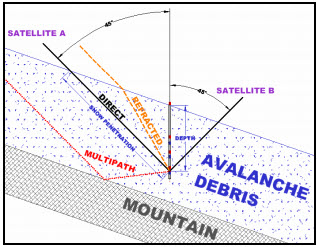
Figure 1 additionally shows the expanded snow that a sign from an upslope satellite (An) unquestionable requirement enter versus a sign from a down-incline satellite (B) with a similar height edge. Inside this examination, profundity will be utilized to depict the vertical separation a recipient is covered in the garbage. Snow entrance will indicate the straight line separation a view (LOS) signal goes through the snow to arrive at the recipient. The snow infiltration is registered dependent on the collector’s profundity, the slant edge and azimuth of the torrential slide flotsam and jetsam and the GPS satellite’s azimuth and rise edge.
TEST METHODOLOGY
Two tests were conducted in the Canadian Rockies during April 2006 to measure the performance of two HSGPS receiver models under avalanche debris. The first test was performed on April 6, 2006 at Mosquito Creek in Banff National Park, Alberta, Canada. The second test was conducted on April 11, 2006 at the Fernie Ski Resort in British Columbia,
Canada. Eight Global Navigation Asset Tracker (GNAT™) systems were used, four equipped with Falcom JP7T GPS modules and the remaining four with JP13 modules. The Falcom JP7T and JP13 GPS modules contain SiRF Technology Inc. SiRFstar IIe/LP and SiRFstar III chipsets separately. The SiRFstar III based frameworks (GNAT3™) were furnished with the Trimble 19 mm square microstrip radio wire, while the SiRFstar IIe/LP based frameworks (GNAT2™) utilized the Sarantel Geohelix-S dynamic helical reception apparatus. The SiRFstar IIe/LP chipsets were running SiRFXTrac firmware, while the SiRFstar III had firmware form 3.1.1. The GNAT™ framework was created by the Plan Group and coordinates GPS modules with a microcontroller, locally available blaze stockpiling and a 2.4 GHz Zigbee modem. Force was given by a solitary 4.2 volt Lithium-Ion battery. The framework was put in a 5 cm measurement by 12 cm long tube shaped fenced in area for the field tests. Figure 2 is a photo of the GNAT™ circuit board with a Trimble dynamic microstrip reception apparatus.
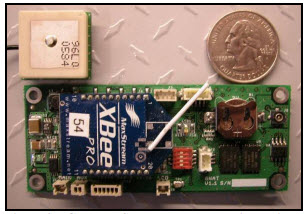
Reference is made to the GPS receiver’s startup thresholds during this research. Manufacturers specify several thresholds including cold start, hot start and tracking. A cold start occurs when the receiver does not have timing, ephemeris or almanac information. A hot start occurs when approximate timing, ephemeris and almanac is available. The tracking threshold specifies the minimum level at which a receiver can continue tracking a signal. Falcom’s specified thresholds for the SiRFstar receivers are given in Table 1.

Test information gathered at 1 Hz included: position, speed, time, collector status, L1 pseudorange and Doppler estimations, C/N0 and following status. The information was put away in the installed 4 MB streak circle and communicate at regular intervals utilizing the Zigbee modem. Boreholes, 6 cm in distance across, were bored in the postavalanche snow pack at every one of the test destinations. The GNAT™ beneficiaries were fueled up and left superficially until they were following every single accessible satellite. The GNAT™ collectors were then suspended in the boreholes and the main 30 to 50 cm was topped with stuffed day off. Borehole facilitates were estimated utilizing a geodetic quality double recurrence GPS beneficiary and receiving wire. The reception apparatus was determined to the snow surface, counterbalance north from the borehole and double recurrence pseudorange, stage and Doppler estimations were gathered for the span of the test. Three hours of double recurrence information from each webpage was submitted to the online Precise Point Positioning (PPP) administration gave by the Geodetic Service of Natural Resources Canada. Pseudorange and bearer stage estimations are handled utilizing exact satellite ephemeris and clock information (Ghoddousi-Fard and Dare 2006). Evaluated flat situating exactnesses of each borehole are around 20 cm, including the blunder coming about because of the counterbalance estimation.
AVALANCHE PROTECTION TEST RESULTS – BANFF, ALBERTA
The first GPS Avalanche Protection execution test was done in Banff National Park, Canada on April 6, 2006. A torrential slide run-out zone on the western part of a mountain south of Mosquito Creek was chosen. The flotsam and jetsam field was around 100 m across and 200 m long. The slant edge was 22° with a tough azimuth of 71°. Figure 3 contains a photo of the torrential slide flotsam and jetsam field taken from beneath and confronting tough. A test area in the field was chosen where the flotsam and jetsam profundity was around 1.7 m. A significant part of the snow surface is secured by squares of pressed day off ice 30 to 40 cm in distance across. At the test start, the best 1 cm of flotsam and jetsam was secured with wet day off. This wet snow expanded to 3 cm during the 3 hour test. Underneath the day off flotsam and jetsam, the mountain side was secured with scree. The mountain top toward the east has a height point of 35°. Tidy trees developing on the south of the run-out incompletely veil GPS flags underneath 5°. A light sprinkle fell during the 3 hour test. Snow tests were taken at profundities of 0.5 m and 1.3 m with densities of 0.47 g/cm3 and 0.50 g/cm3 separately.
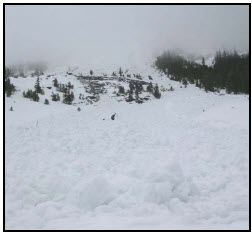
Two 6 cm diameter holes were drilled into the avalanche debris. The lower hole had two GNAT2™ receivers placed at depths of 1.53 m and 1.0 m. A third receiver was placed on top of the hole after it was capped with a snow block. A second borehole, located 1.5 m upslope, held two GNAT3™ receivers placed at depths of 1.45 m and 1.05 m. This hole was completely backfilled with snow. A third GNAT3™ based receiver was placed on the surface; however startup difficulties were encountered and the receiver failed to track satellites. Position, velocity, time and satellite status was collected at 1 Hz. Pseudorange and Doppler data was also collected on the GNAT2™ receivers. Figure 4 shows the relative geometry of the holes and the GPS receiver placement.
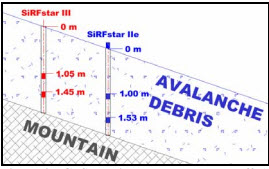
SATELLITE AVAILABILITY
Test information gathered incorporated the quantity of GPS satellites for Avalanche Protection followed and the number utilized by the collector to process a position arrangement. This information is abridged in Table 2, with the mean and standard deviation of the satellites followed and utilized given for every collector. The quantity of satellites followed and utilized by the GNAT2™ diminishes the more profound a beneficiary is covered, from a normal of 9 satellites followed superficially to 7.8 satellites at a profundity of 1.53 m. The GNAT3™ experienced issues following at a profundity of 1.05 m where just 3.4 satellites were followed all things considered. Interestingly, before the GNAT3™ at 1.45 m filled its information capacity, it had following execution similar to the surface recipients, following a normal of 9.4 satellites.

Polar plots of the satellites followed by the GNAT2™ at the surface and underneath 1.53 m of snow are appeared in Figure 5. Satellites in the upper east are obstructed by the mountain. Satellite tracks are discontinuous for the recipient underneath the day off.
